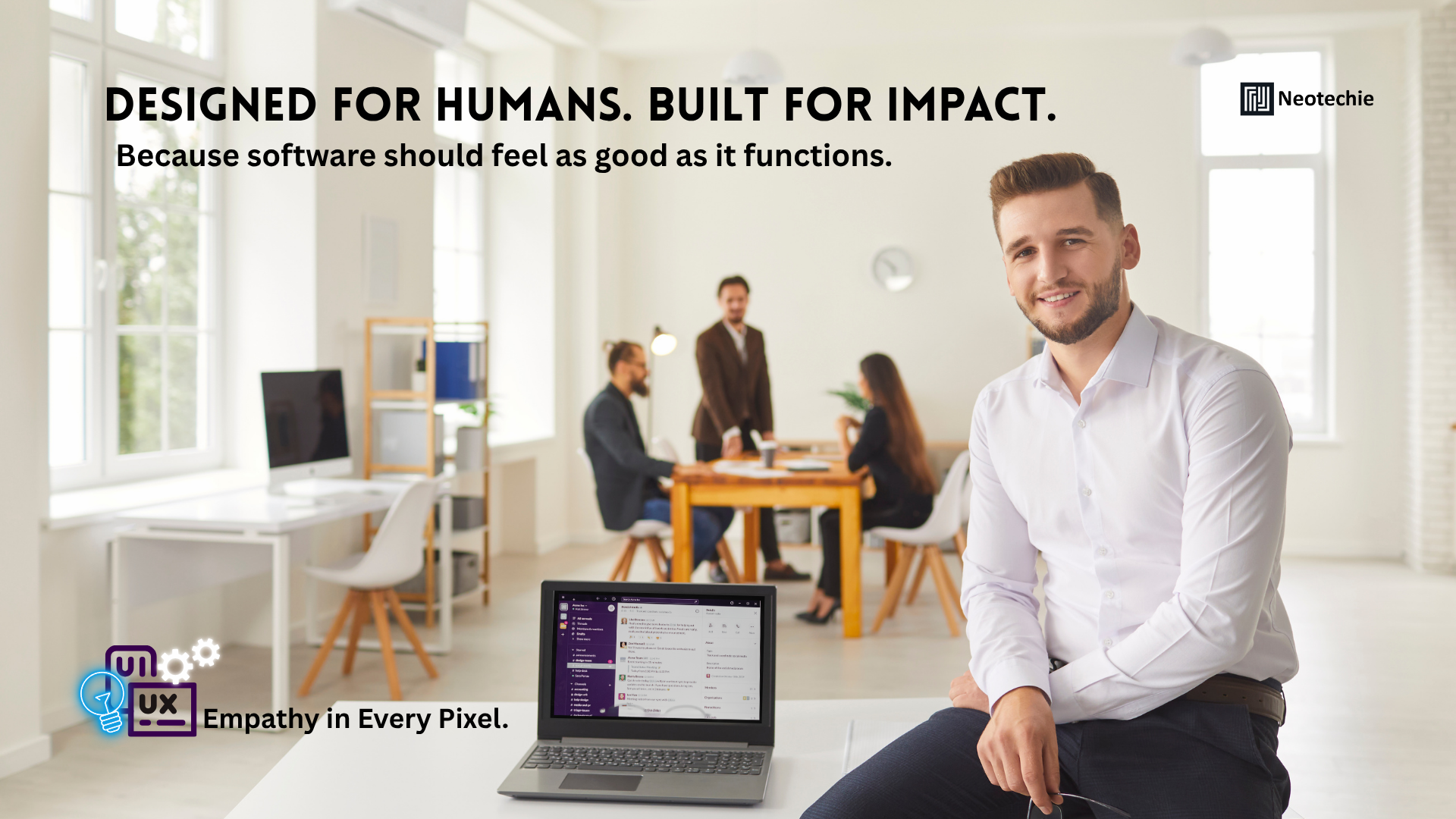Design That Works: Elevating Business Outcomes Through Exceptional User Experience
Software doesn’t succeed just because it functions—it thrives when it creates a connection. From employee dashboards to customer-facing apps, what truly drives adoption and impact is not just what your software does, but how it makes people feel when they use it. That’s where User Experience (UX) comes into play.
UX design is the difference between frustration and flow, between one-time users and lifelong champions. It’s a human-first approach to digital product design that prioritizes clarity, consistency, and usability. It helps reduce friction, build trust, and ultimately, boost performance across all digital touchpoints.
Why UX is a Strategic Imperative
In an age of digital overload, users make snap judgments—often within seconds. If your software isn’t clear, intuitive, and helpful from the first interaction, they’ll abandon it. The stakes are especially high for business applications where poor UX translates directly into increased support costs, lower productivity, and disengaged teams.
Investing in UX is not about aesthetics—it’s a business strategy. Exceptional UX leads to:
- Greater user satisfaction and loyalty
- Faster onboarding with less training required
- Higher feature adoption and usage rates
- Reduced internal support requests and troubleshooting
- Increased ROI through improved productivity
Anatomy of Great UX: What Makes a Product Truly Usable?
Great UX feels invisible—it simply works. But behind every seamless interface is a set of guiding principles and meticulous planning. These include:
- Clarity: Eliminate confusion through meaningful design. Users should know what to do and where to go—instinctively.
- Consistency: Patterns in layout, language, and behavior create familiarity and confidence.
- Speed: Lag, delay, or slowness instantly kills the experience. Optimized load times and transitions are non-negotiable.
- Accessibility: Great UX works for everyone, including users with disabilities. Inclusive design broadens your reach and reflects your values.
- Guidance and Feedback: Users want confirmation that their actions are successful, and subtle cues go a long way.
Putting the User First: The Power of User-Centered Design
We often ask, “What should the product do?” but forget to ask, “What does the user actually need?” That’s the heart of User-Centered Design (UCD)—a methodology that builds software based on user goals, behaviors, and pain points.
The process typically includes:
- Research and Empathy Mapping: Interviews, surveys, and observations that build real user personas.
- Wireframes and Interactive Prototypes: Early-stage designs that simulate experience before development begins.
- Usability Testing: Iterative validation with real users to test assumptions and refine workflows.
- Continuous Feedback Loops: Gathering input not only during development but post-launch to inform updates.
This process ensures that every element—from navigation to form fields—exists for a reason and is optimized for the people using it.
The Business Case: Why UX Delivers Measurable Returns
Studies consistently show the bottom-line impact of UX investment. A seamless digital experience doesn’t just improve satisfaction—it drives meaningful outcomes across the board.
- Reduced support costs: When users can help themselves, fewer tickets get raised.
- Increased efficiency: Streamlined workflows mean less time navigating software, more time achieving goals.
- Improved employee morale: Teams enjoy using tools that empower them.
- Competitive differentiation: In crowded markets, experience becomes a key differentiator.
Companies that prioritize UX outperform their competitors not just in user metrics but in revenue, retention, and reputation.
Beyond Utility: Designing for Emotion, Trust, and Delight
Good UX meets needs. Great UX anticipates them. That’s when users don’t just use a tool—they connect with it.
This deeper engagement happens when software feels personal, intelligent, and responsive to user behavior. Techniques that promote this include:
- Micro-interactions: Subtle animations or responses that reassure and delight.
- Empty-state messaging: Helpful content when data is missing, guiding users forward.
- Tone of voice: Copy that’s clear, human, and aligned with your brand.
- Gamification: Progress bars, achievements, and feedback loops that make interactions feel rewarding.
These emotional design layers make users feel seen, supported, and understood—leading to stronger product loyalty.
Scaling UX for Diverse Use Cases
Whether your audience includes ten enterprise teams or ten thousand app users, scaling UX requires strategic planning.
For enterprise software, UX design might focus on:
- Tailored dashboards per department or role
- Streamlined data input and retrieval
- Integration with third-party tools for seamless workflow
For consumer-facing platforms, UX design might prioritize:
- Clean, modern mobile interfaces
- Personalized user flows and recommendations
- Embedded support, chatbots, and tooltips
Across both, a solid design system ensures consistency, quality, and reusability as your product grows.
Experience-First Software: How Neotechie Designs for Humans, Not Just Users
At Neotechie, we believe the best software isn’t just built—it’s felt. That’s why we lead every project with a sharp focus on user experience design.
We understand that behind every line of code is a human trying to complete a task, solve a problem, or achieve a goal. Our UX experts, developers, and product strategists work hand-in-hand to design digital experiences that feel effortless, elegant, and empowering.
We follow a rigorous user-centered design process, starting with deep user research and translating those insights into wireframes and interactive prototypes. By testing usability before development begins, we ensure our solutions are refined, responsive, and reliable.
Our mission is to reduce friction and increase clarity—for your teams, your customers, and your partners. Whether we’re designing a new customer portal or optimizing internal tools, we deliver applications that are intuitive, engaging, and built to perform.
The result? Higher adoption rates, lower support overhead, and digital products that people actually want to use.
We don’t just prioritize the user experience—we design it with purpose, empathy, and long-term value in mind.
Final Thoughts
UX is no longer a nice-to-have—it’s the cornerstone of software success. As businesses compete not only on features but on experience, putting users at the center of design is a winning move.
At Neotechie, we treat UX as a strategic advantage. We don’t just ship functional applications—we craft digital experiences that connect, convert, and endure.
Because when you design for people, results follow.

